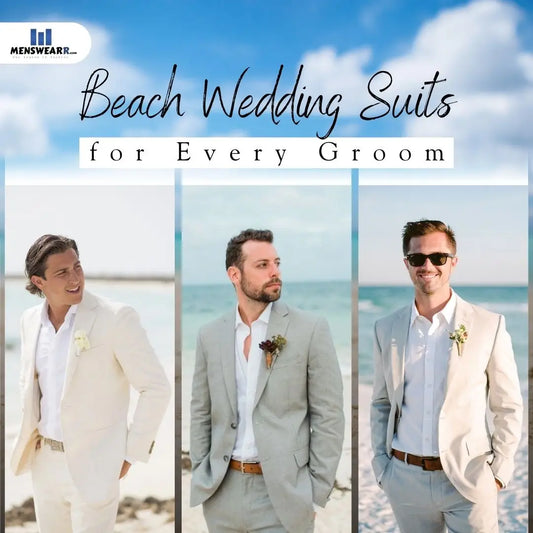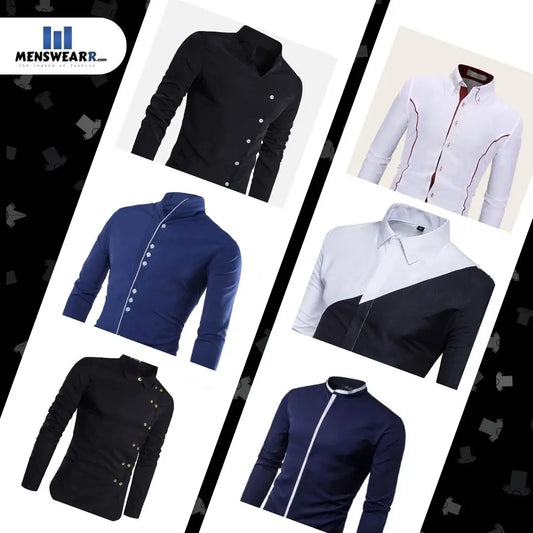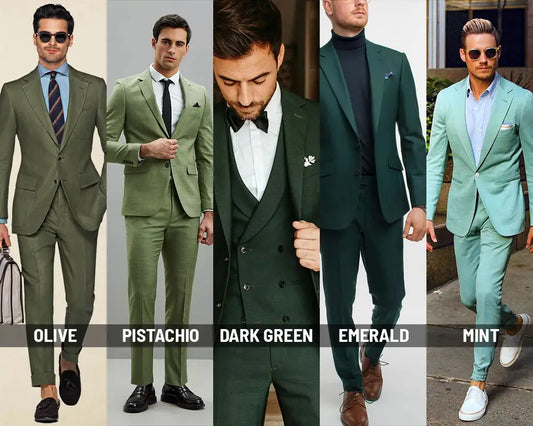In the ever-evolving landscape of the business world, the once-rigid lines of traditional office attire have blurred. Gone are the days when a suit and tie were the unquestioned uniform of the corporate world. Instead, a more versatile and relaxed approach known as "business casual" has taken root. In this comprehensive guide, we'll delve deeper into the subtleties of the men's business casual dress code, providing you with the knowledge and confidence to navigate this contemporary sartorial landscape.
Business Casual vs. Formal Business
Business casual attire is characterized by its relaxed and modern approach, allowing for button-up shirts paired with chinos or slacks, sometimes even accommodating clean sneakers; it often gives individuals the option to wear ties but leaves room for personal style expression, making it suitable for everyday office wear and casual meetings.
On the other hand, formal business attire is known for its structured and professional appearance, demanding crisp dress shirts, dress trousers, and, in many cases, complete suits, always accompanied by traditional leather dress shoes, with ties typically being a requirement; it's the go-to choice for formal occasions such as client presentations, job interviews, and meetings where a high level of professionalism is expected.
Decoding Business Casual
Business casual is a dress code that strikes a delicate balance between the formal attire of yesteryears and the relaxed comfort of contemporary fashion. It embodies the idea of looking professional while feeling at ease. To fully grasp this dress code, let's break down its key components:
1. Shirts: The Foundation
When it comes to shirts, opt for well-fitted, button-up options. These shirts should maintain a sense of professionalism without feeling overly restrictive. You have the freedom to choose from a variety of colors and patterns, but it's generally advisable to steer clear of excessively loud prints. Tucking in your shirt is often recommended, but if it's designed to be worn untucked, ensure it's not excessively long for a balanced appearance.
2. Pants: The Versatile Bottom Half
Business casual pants offer versatility without sacrificing refinement. Chinos, slacks, or dress trousers are your go-to choices. They should be well-tailored to your body shape and preferences. Classic colors such as navy, khaki, gray, or black are safe bets, allowing you to mix and match with ease.
3. Footwear: The Right Step Forward
Footwear plays a crucial role in the business casual ensemble. While leather shoes remain a staple, you do have some flexibility. Loafers, brogues, or derbies work well within this dress code. However, it's essential to note that sneakers are generally reserved for more casual settings unless your workplace explicitly allows them.
4. Accessories: The Subtle Accents
Subdued accessories can enhance your business casual look. A well-crafted leather belt that complements your footwear is a tasteful addition. Ties, while not mandatory, can be worn occasionally to introduce a touch of formality when needed. A simple wristwatch not only keeps you punctual but also adds a touch of sophistication.
5. Outerwear: Layering with Style
Adding layers can elevate your business casual attire. Blazers and sports jackets are versatile pieces that can be worn with or without a tie, depending on the occasion. They effortlessly bridge the gap between formal and relaxed. Additionally, lightweight sweaters in various textures and colors are excellent for layering while maintaining a polished appearance.
What to Steer Clear Of
To truly master the art of business casual, it's equally important to know what to avoid:
Jeans: While some offices may permit them, it's crucial to stick to dark, well-fitted jeans. Light or distressed denim is generally not appropriate within this dress code.
T-shirts: Reserve your favorite tees for casual outings. In a business casual environment, opt for more refined shirt choices.
Sloppy Sneakers: While comfort is key, sneakers with a formal appearance, such as clean, minimalist white sneakers, can be an exception. However, overly casual or athletic sneakers should be avoided.
Excessive Accessories: When it comes to accessories, the principle of "less is more" often applies. Avoid overloading with jewelry or flashy accessories, which can detract from the professional image.
Wrinkled or Ill-Fitting Clothing: Ensure that your attire is clean, well-pressed, and properly tailored. Wrinkled clothing or garments that do not fit well can undermine the polished look you aim to achieve.
Dressing for Success
In conclusion, mastering the men's business casual dress code is about finding the perfect equilibrium between professional appearance and personal comfort. It's also important to recognize that dress codes can vary widely between industries and individual companies. Therefore, it's prudent to familiarize yourself with the specific expectations of your workplace.
By adhering to these guidelines and adapting them to your unique work environment, you'll confidently navigate the world of business casual attire. Whether you're attending a meeting, interacting with clients, or collaborating with colleagues, your well-honed understanding of this dress code will ensure you make a lasting and professional impression.






